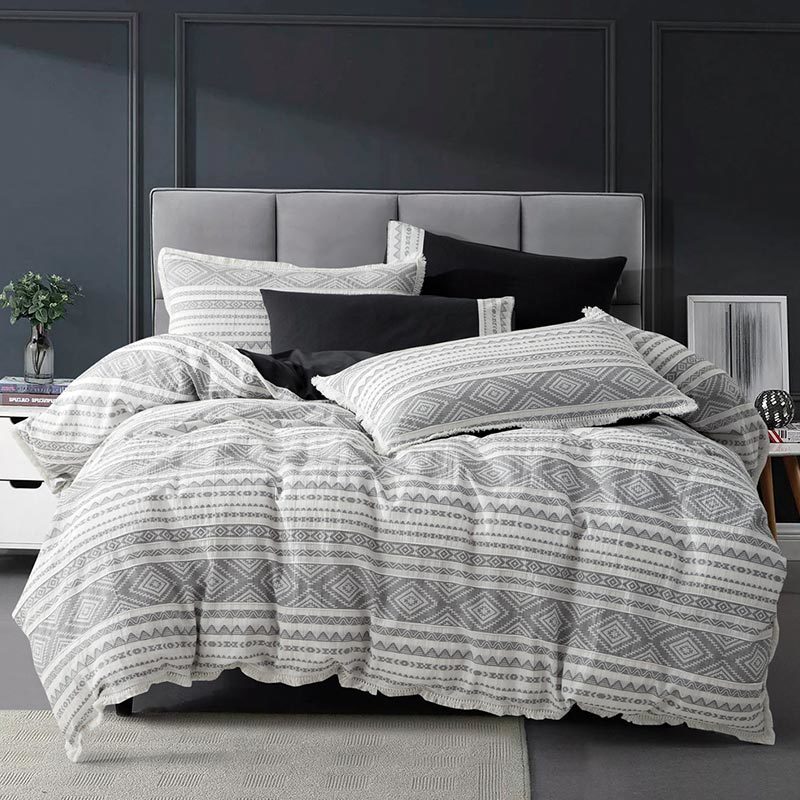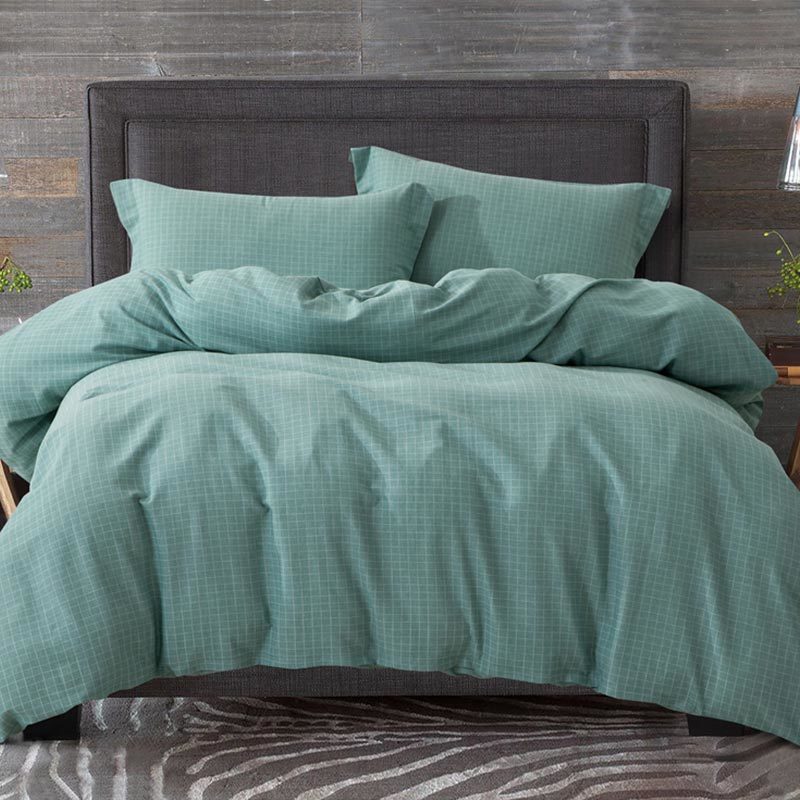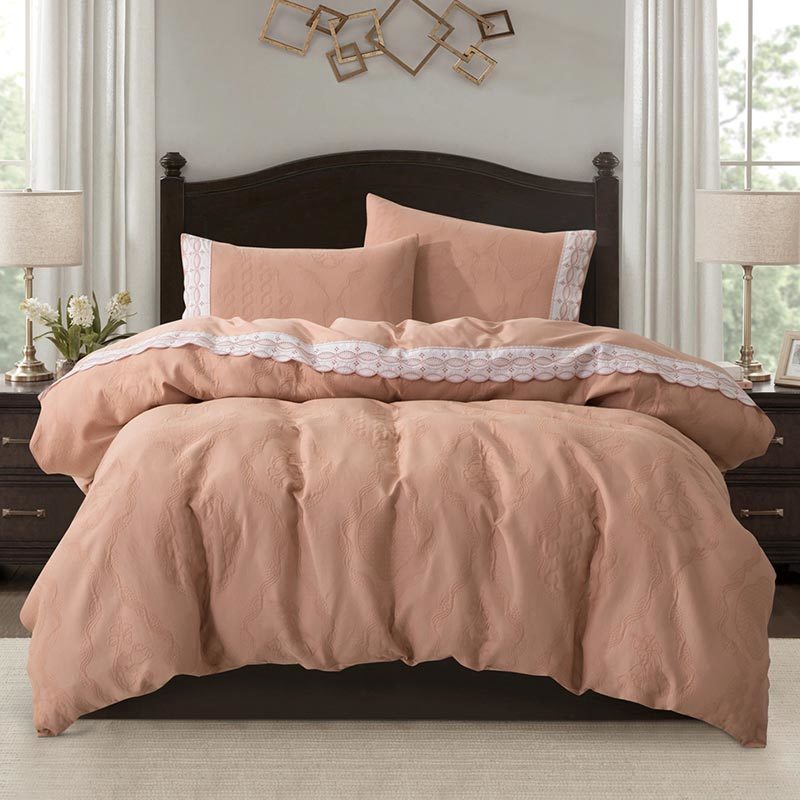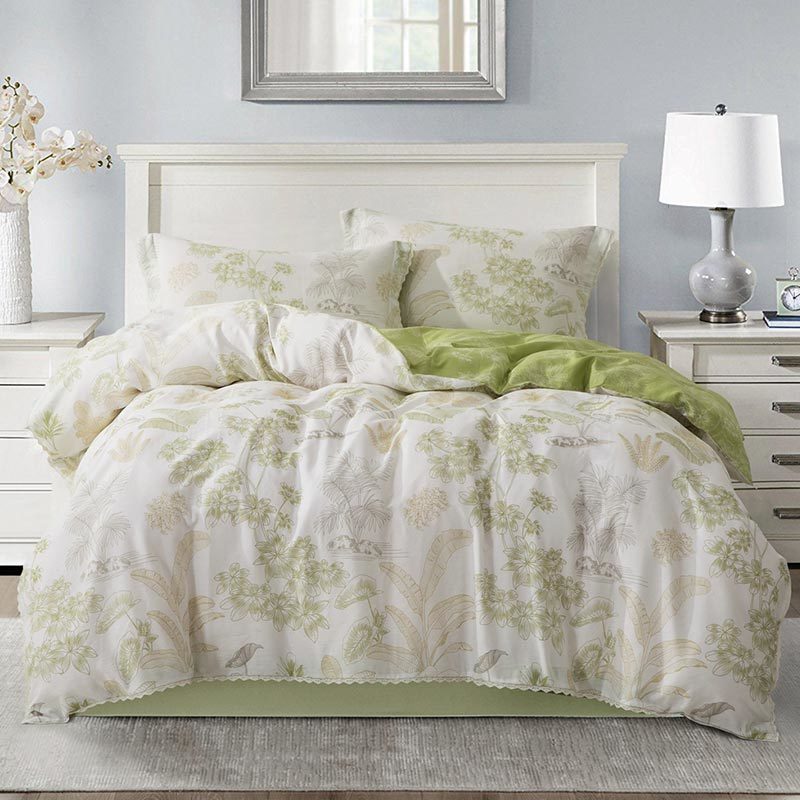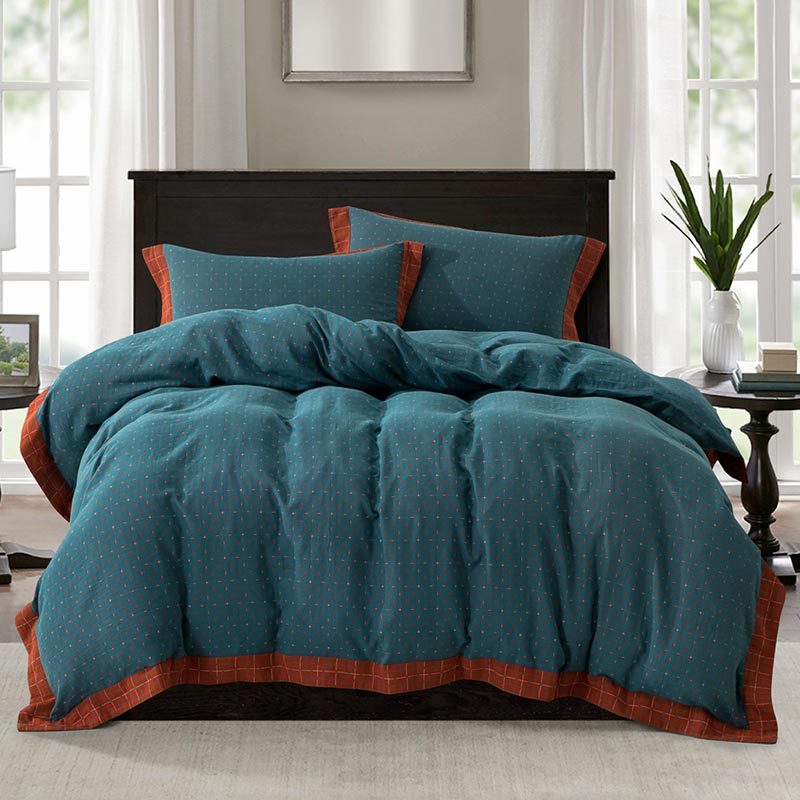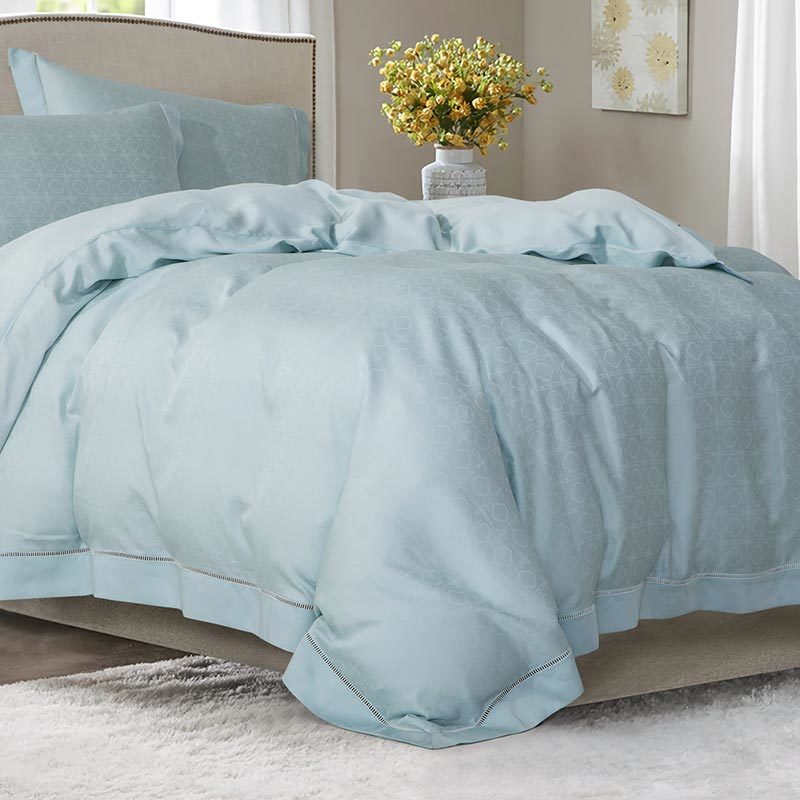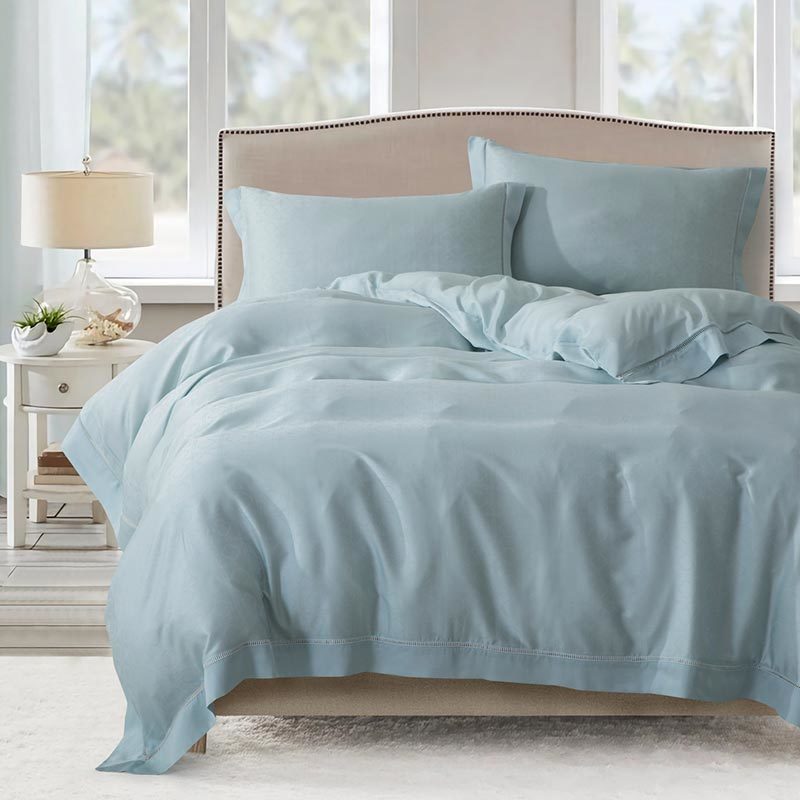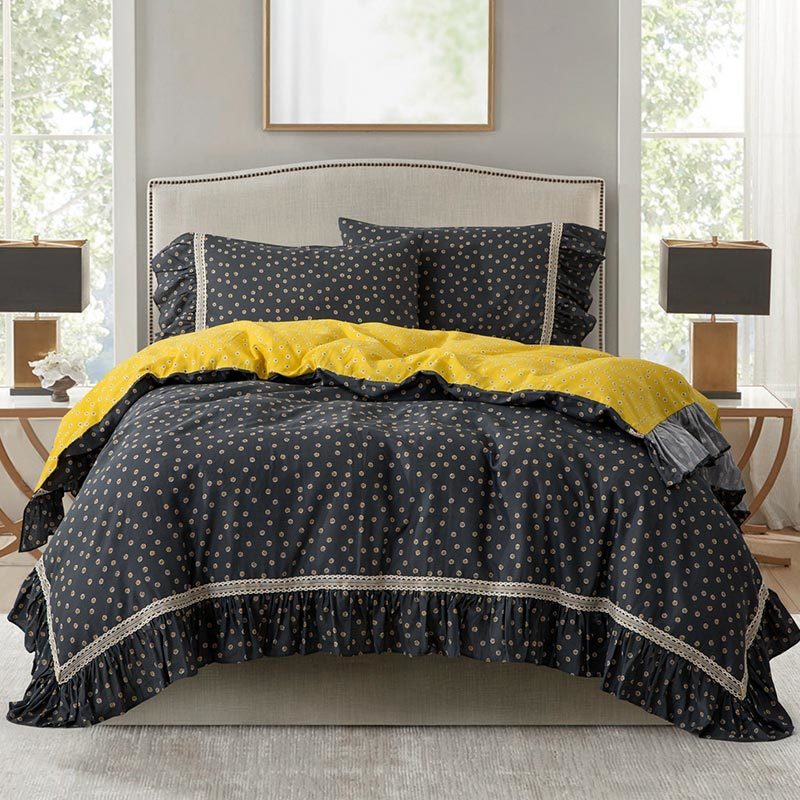What are the advantages of home textiles?
Time:
2023/04/20
The fabrics used in the early days of home textiles only had certain requirements for shrinkage rate and color fastness, in addition to the inherent quality requirements. With the rapid development of the domestic home textile market, there are higher requirements for the functional type of home textile fabrics.
Textile manufacturers have made several suggestions to the users of textiles: for towels, adults and children must be used every day, so the absorbency of the fabric, antibacterial deodorant requirements are higher; for bedding, in the pursuit of warmth at the same time, but not too heavy; for curtains, not only to play a decorative role in the room, but also for wind resistance, water resistance has high requirements; for sand release class In addition to the beautiful, feel good requirements, the fabric has a good anti-staining, decontamination is also an important measure. These performance requirements from the perspective of textile technology is very demanding, and even many indicators are in conflict with each other. Any single natural or chemical fiber can not meet these requirements, only through the composite of a variety of fibers and multiple chemical finishing to try to achieve these functions.
1, warmth: Although the warmth is closely related to the thickness of the fabric, but users do not like the quilt and other bedding is too heavy, so both warm and lightweight to become the basic requirements of the current bedding. The most common way to achieve this requirement is to make the polyester fiber porous hollow inside, so that the fiber contains a lot of non-circulating air, and the external spiral curl to maintain the fluffiness, so it can play a good insulation effect while ensuring a light texture.
In addition, in polyester and other synthetic fibers spinning liquid containing chromium oxide, magnesium oxide, zirconium oxide and other special ceramic powder, especially nano-scale microscopic ceramic powder, it can absorb sunlight and other visible light and convert it into heat, so it has excellent thermal insulation, heat storage properties. There are also far-infrared ceramic powder, adhesives and cross-linking agents formulated into finishing agents, fabric coating treatment, and then by drying and baking treatment, so that the nano ceramic powder attached to the surface of the fabric and between the yarn, this finishing agent has anti-bacterial, anti-odor, promote blood circulation and other health care functions.
2, antibacterial, deodorant: As towels are often dipped in water, and generally placed in a relatively humid environment, microorganisms will proliferate, which may lead to towels emitting odor and cause users itchy feeling. Therefore, the requirements for the towel class is relatively high, preferably after the antibacterial anti-odor chemical treatment. The general way is to use a finishing agent with antiseptic effect to make it have certain antimicrobial properties. In recent years, Japan has done a lot of research on natural antimicrobial finishing agents, such as the use of aloe vera, mugwort and other aromatic oil extracts with antimicrobial effect, which is encapsulated in porous organic microcapsules or porous ceramic powder attached to the fabric, and resin cross-linking fixed, through friction, pressure and other mechanical effects slowly release the antimicrobial agent to achieve the purpose of durable antimicrobial finishing. This type of natural antimicrobial agent has a certain health care function, but due to the limited technology of fixed antimicrobial agent, the antimicrobial agent is not good enough for washing, every wash antimicrobial performance will decline some, generally dozens of times after the complete disappearance.
3, stain prevention, stain removal: Sofa home textiles require as far as possible not easy to be stained by stains, once stained and easy to wash to remove. At present, the technology is generally used to change the surface properties of the fiber, significantly improve the surface tension of the fabric, so that oil and other stains are difficult to penetrate the fabric inside to, light stains can be removed with a wet cloth wipe, heavier stains are also easy to clean. Anti-fouling finishing not only to prevent oil pollution, but also has the performance of waterproof and moisture permeability, is a more practical and effective means of advanced chemical finishing.
4, waterproof: curtains, sofa home textiles require fabrics with good water resistance, waterproof fabric is the use of the surface tension characteristics of water, coated with a layer on the fabric in order to enhance the surface tension of the fabric chemical coating, so that water beads can not pass through the pores on the fabric surface tissue, so as to achieve the effect of waterproof.
5, moisture permeability: quilt cover home textiles because of its own characteristics, the fabric needs to have moisture permeability. Fabric moisture permeability can be done in the fabric structure, such as the use of double-layer tissue structure, the inner layer of the body with hydrophobic fibers, and the outer layer with hydrophilic fibers, so that sweat can rely on capillary action, from the skin to the inner layer of fibers, and then due to the outer layer of hydrophilic fibers and the combination of water molecules stronger than the inner layer of hydrophobic fibers, water molecules and again from the inner layer of the fabric to the outer layer, and finally emitted.
6, anti-static home textiles are basically made of chemical fiber fabrics, whenever the moisture is easy to evaporate, the environment is relatively dry season, static electricity becomes a problem. Static electricity will generally make home textiles easy to pilling, easy to stain dust and dirt, close to the skin with a sense of electric shock, etc.. The best anti-static fabrics are woven from natural fibers, but pure natural fiber fabrics are often expensive and difficult to meet different levels of home textile consumers, and even natural fiber fabrics can generate static electricity due to the lack of water molecules in a very dry environment. Home textile fabrics with antistatic finishing way is mainly used with moisture-absorbing antistatic agent, to the surface of the fabric coated with a layer of water molecules can be adsorbed chemical film, so that the surface of the fabric to form a continuous layer of conductive water film, the electrostatic conductive escape. This method can make the fabric with anti-static function at the same time will not affect the softness and comfort.
Key words:
Previous article


